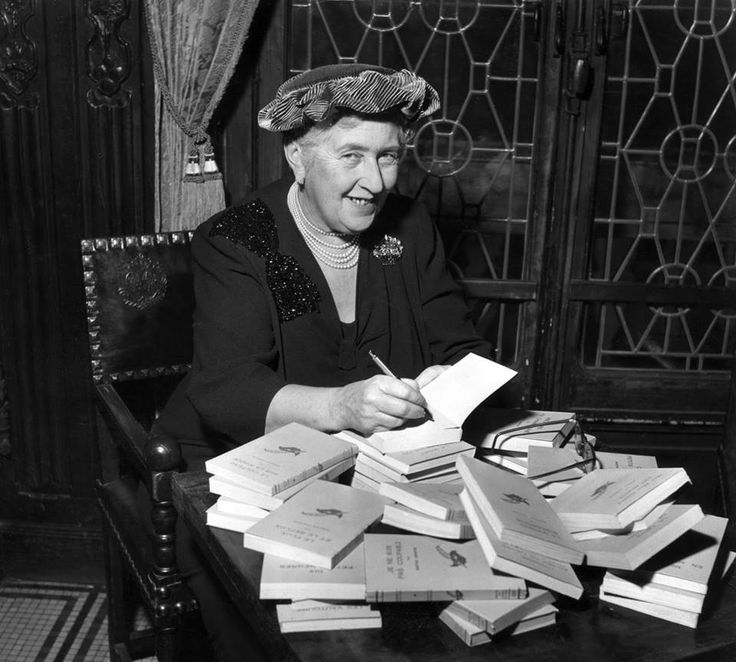"I want things to happen. Exciting things. Wouldn't you like to go chasing German spies again, Tommy? Think of the wild days of peril we went through once." - Tuppence Beresford, Partners in Crime, p. 2
The Sum of It:
This week we have dived head first back into the adventurous and terrifically witty world of Tommy and Tuppence Beresford with
Partners in Crime. The one-time Adventurers for Hire duo from
The Secret Adversary are settling into married life, and settling rather badly. After all their excitement in
Secret Adversary they want more than just home life. Lucky for the Beresfords, high-up-spy-man Mr. Carter comes to the rescue with a proposition: would Tommy and Tuppence like to pose as a Mr. Blunt and Secretary at the International Detective Agency in order to find out more about some fishy "foreign business" involving blue letters from a Russian ham merchant who just wants to find his refugee wife?? Um, #YASPLEASE
What follows is a truly jolly collection of short stories with many #DameAgatha classics: stabbings at costume parties, poisoned chocolates, a lady hiding from her fiance' while undergoing "slimming treatments" #dubiousscience, disappearing ladies, and that's just the start! We will be honest: the mysteries in
Partners in Crime aren't necessarily mind blowing, but the dialogue is just so scintillating, it's a pure delight to read. Take this passage from chapter 1:
"Don't you ever have a wild secret yearning for romance - adventure - life?"
"What
have you been reading, Tuppence?" asked Tommy.
"Think how exciting it would be," went on Tuppence, "if we heard a wild rapping at the door and went to open it and in staggered a dead man."
"If he was dead he couldn't stagger," said Tommy critically.
"You know what I mean," said Tuppence. "They always stagger in just before they die and fall at your feet just gasping out a few enigmatic words. 'The Spotted Leopard' or something like that."
Now tell us you don't want to read a whole book of that delightful repartee...
The YOA Treatment:
One of the particularly fun things about
Partners in Crime is Agatha's not so subtle nods to the detective classics sprinkled throughout the cases. Tommy and Tuppence have great bookshelves of classic detective novels in their office and they often reference them in their exploits, and decide to try solving crimes in the style of many of their favorites (Tommy even pretends to be blind at one point while imitating Thornley Colton, the blind Problemist. Fortunately Agatha and Tommy avoid insensitivity by having him pledge to donate loads of money to a charity for the blind). One of Audrey's favorite instances is Tommy's attempts at the eccentricities of Sherlock Holmes:
"He picked up a violin which lay on the table, and drew the bow once or twice across the strings. Tuppence ground her teethe and even the explorer blenched...As the visitor left the office, Tuppence grabbed the violin and putting it in the cupboard turned the key in the lock. 'If you must be Sherlock Holmes,' she observed, 'I'll get you a nice little syringe and a bottle labeled Cocaine, but for God's sake leave that violin alone."
Sherlock Holmes isn't the only detective Agatha paid homage to - in fact she even left a few hints at Hercule Poirot! There are many instances of Tuppence or Tommy encouraging the other to "use your little grey cells, mon ami" #tresadorbs. Ol' Tommy at one point dresses up as a parson and imitates the well known clerical sleuth Father Brown.
Agatha owes the roots of her own mysteries to the work of her predecessors, and tells in her autobiography about a conversation with her sister Madge, who had introduced her to some of her favorite detective story authors, including Sir Arthur Conan Doyle, Paul Beck, and Gaston Le Roux. She told Madge after reading a Paul Beck book called
The Mystery of the Yellow Room that she would like to try her hand at writing a detective story. Madge basically said "yeah right good luck" but from that moment, Agatha says she was "fired by determination" that she would write a detective story. And how!
- A. & E.















